Fix a Dell Laptop Black Screen with Caps Lock On
One of the most common errors on Dell laptops is when the screen goes black, and you can no longer access the desktop. This often happens on startup but can also happen at any time. When you get a black screen with caps lock on and the power lights blinking, it suggests a problem with the power supply.
I faced this issue on a Dell G3 15, but it can occur on other models and other brands on laptop.
Here’s everything you need to know about the Dell laptop black screen caps lock on problem, why it occurs, and how you can fix it with a few simple steps.
Why does my Dell laptop show a black screen with caps lock turned on?
The most common cause for a dell laptop black screen caps lock on error is a problem with the battery and residual power. It turns out the caps lock solid white light is not necessarily related to the problem and can just indicate you already had the setting on, or the keyboard is also having some power problems.
- Solid white — The charging cable is connected, and the battery has more than 5 percent charge.
- Amber — The laptop is running without the power adapter and the battery has less than 5 percent charge.
When the lights blink amber and you hear beeping, there is a power supply problem. This may be accompanied by the caps lock light being on.
This can happen for many reasons, including:
Power Supply – The power adapter is failing and cannot deliver power or charge, or the battery is failing and cannot maintain charge. The battery can also become unseated.
RAM Failure – RAM is not being recognized and may need to be replaced or reseated. Without RAM working correctly, the screen will go black and eventually shut down the laptop.
Malware – Malware and viruses can target various hardware drivers and system files to cause the screen to go black.
System Corruption – Along with malware, power surges, improper shutdowns, hardware failure, failed updates, and many other things can cause critical Windows system files to go missing or become corrupted.
Overlocking – Pushing your laptop’s CPU, GPU, or RAM beyond its capabilities can cause a black screen.
Overheating – If your Dell laptop is running too hot, a black screen is one sign that it needs to shut down and cool off.
Note: Many of these problems can overlap and there might not be a single cause for a black screen with caps lock on.
7 best fixes for a Dell laptop black screen with caps lock on
After resolving this problem myself, here is a handy step-by-step process for getting your laptop back to optimal performance.
1. Perform a Hard Reset
Doing a hard reset is a good way to get rid of any residual power problems and reboot with a fresh start.
1. To force a hard reset on your Dell laptop, hold down the power button for at least 15 seconds. This should turn off the laptop completely.
2. After a few minutes, turn it back on and check if the problem persists.
2. Check Hardware and External Devices
If the above doesn’t work, perform another hard reset.
1. This time remove the power adapter, battery, and any external devices like USB drives and printers.
2. Open the back of the laptop and remove and reseat the RAM module.
3. Let the laptop sit for a few minutes to cool.
3. Reseat the RAM, reconnect the battery and power adapter, and turn the laptop back on.
If everything runs smoothly, the culprit may be an external device. If not, you may need to replace your RAM, battery, or power adapter.
3. Update Drivers
This error usually allows you to get to the desktop, at least for a period of time. If the error happens on startup, see our other guide.
1. Either use your hardware’s software utility to check for driver updates or download them from the official sites and install them using the Device Manager.
2. Type Device Manager in the start menu search bar and open it.
3. Look out for exclamation warnings that suggest a driver needs updating or the device is faulty.
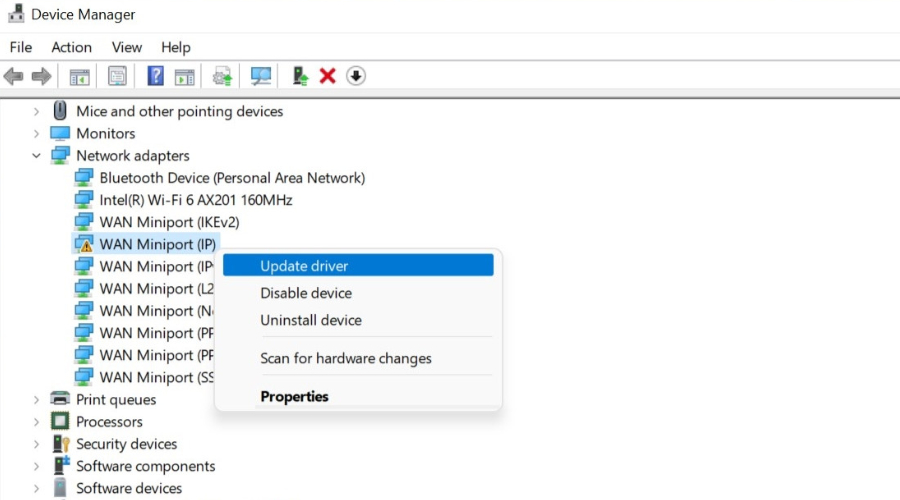
4. Right click on a device and select Update Driver.
5. Follow the prompts and browse to the driver files you downloaded from the manufacturer’s site. Windows can also check for driver updates automatically, but this doesn’t always work.
4. Scan for Malware, Update Windows, and Reverse Overclocking
1. Whenever you experience a laptop problem, it’s wise to run a full system Malware scan using Windows Virus & threat protection or a reputable third-party antivirus.
2. You also check for Windows updates in case the last Windows update failed and caused system corruption.
3. Reverse any overclocking in case this is causing the black screen.
5. Use Windows Repair Utilities
Windows lets you repair corrupted system files via the Command Prompt.
1. Open the start menu search bar and type CMD to bring up the Command Prompt, then choose to run it as an Administrator.
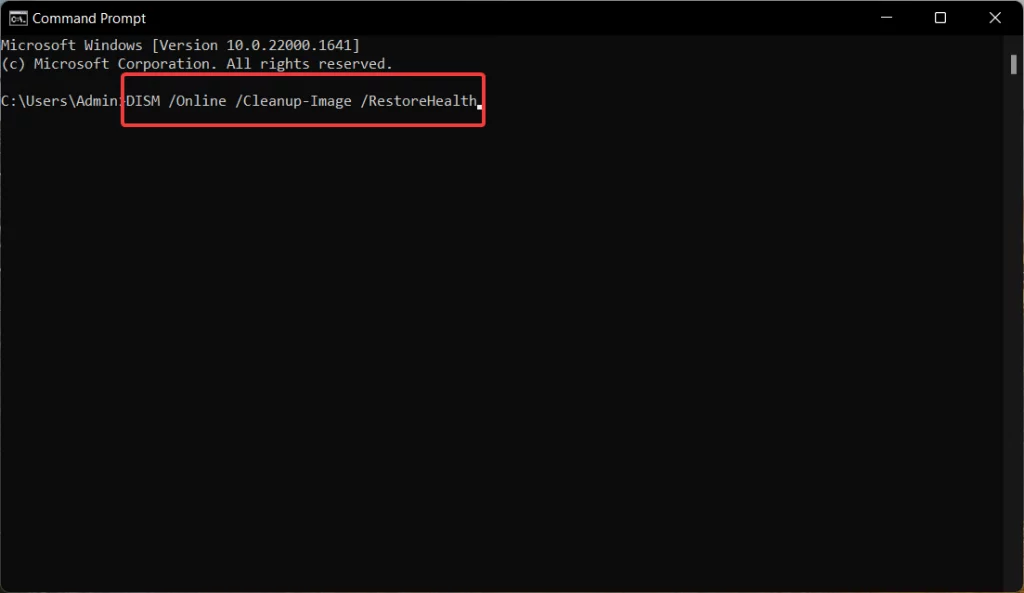
2. Type DISM /Online /Cleanup-Image /Restorehealth in theCommand Prompt Window followed by the Enter key.
4. Wait for the process to complete and your laptop may restart.
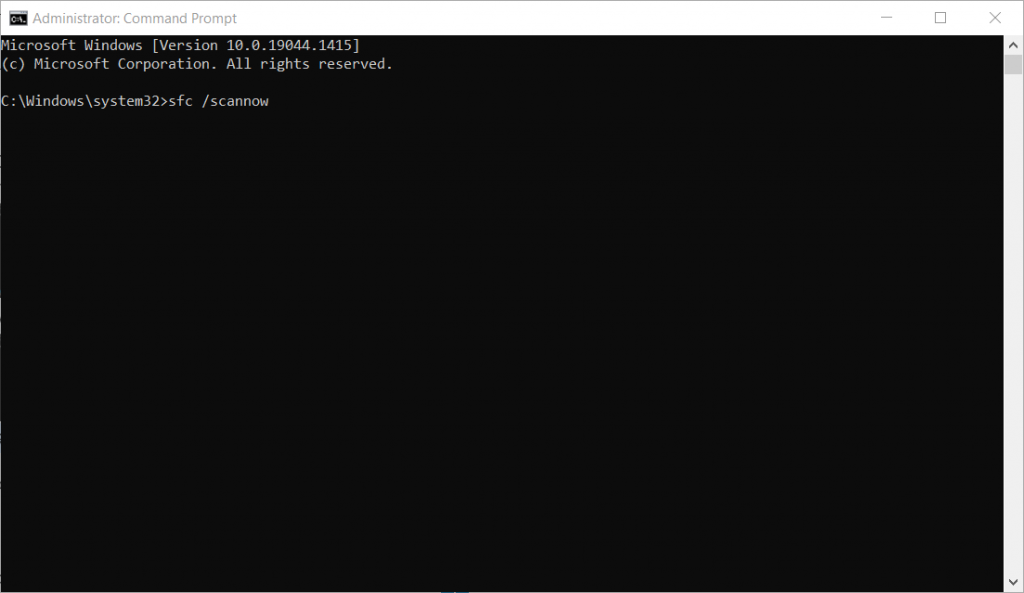
5. Once back at the desktop, run the Command Prompt again and type the following command: sfc /scannow
5. Wait for the process to complete and your laptop may restart.
6. Use the Fortect Repair Tool
Fortect is an all-in-one tool that detects corrupted or missing system files like DLLs, system overheating, and when the Windows registry is broken. It often works better than Windows’ own tools and will fix any system corruption that is contributing to the black screen problem.
1. Download and Install Fortect on your Dell laptop.
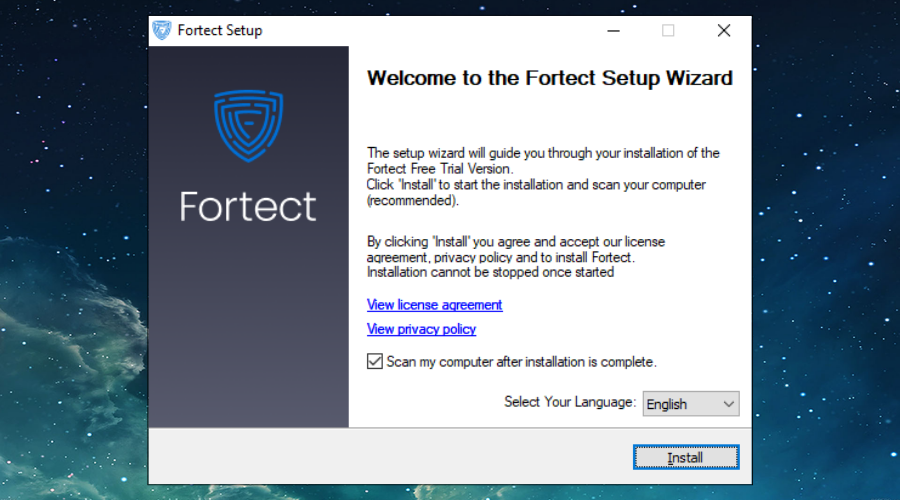
2. Open the program and accept a scan.
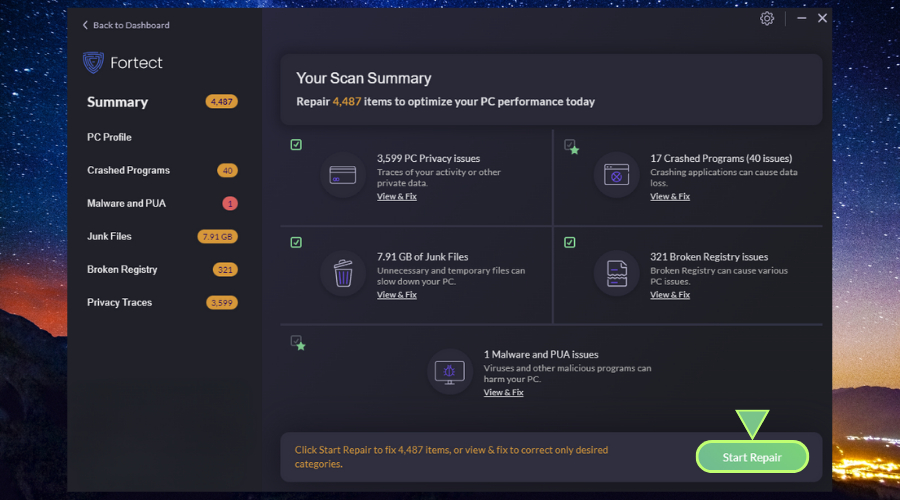
3. Once finished, Click Start Repair and it will automatically fix Windows with clean copies of system files and registry entries from its up-to-date database.
Fortect also removed junk and temp files that may be bogging down your hard drive.
7. Safe Mode and Advanced Boot Options
If your Dell laptop doesn’t get to the desktop or goes to the black screen too quickly before you can apply fixes, you can reboot and access Windows repair features via the Command Prompt or boot in Safe Mode and use Fortect.
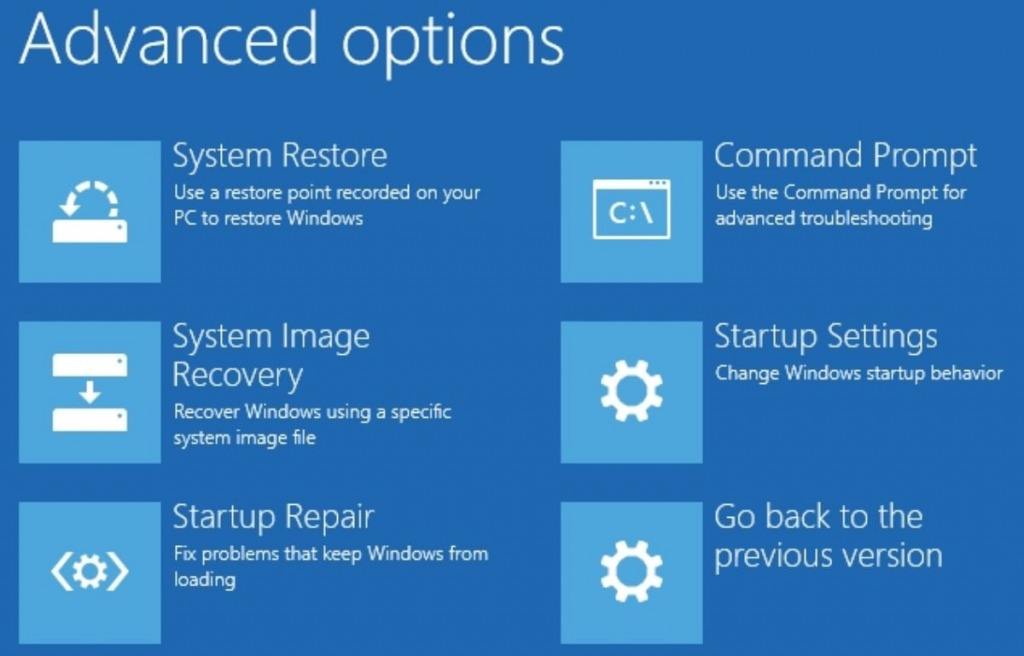
1. To get to the right screen, you must press a specific key while the laptop boots. Depending on the model, this is either F8, F2, or F12. Tap and hold the key continuously so it registers and enters Advanced Boot Options.
2. Follow the prompts to find your desired options.
3. Startup Repair will attempt to fix problems with booting to the desktop.
4. The Command Prompt allows you to run step 5 above.
5. Safe Mode bypasses unnecessary drivers and startup programs, so you can get to the desktop and apply fixes without the black screen before restarting as normal.
6. System Restore lets you rollback to a previous point in time, in case some erroneous user settings or system files are causing the black screen.
Final thoughts on the Dell laptop black screen with caps lock on
A black screen can be incredibly frustrating because it prevents you from using the laptop. In most cases, the issue isn’t serious and can be resolved by following the steps above and ensuring your system is running smoothly by using a tune-up tool like Fortect.
In some cases, you may need to replace components like the power adapter, battery, or RAM, but this is much cheaper than replacing the laptop entirely.
Check Dell’s own troubleshooting page for more info on its various error lights.




